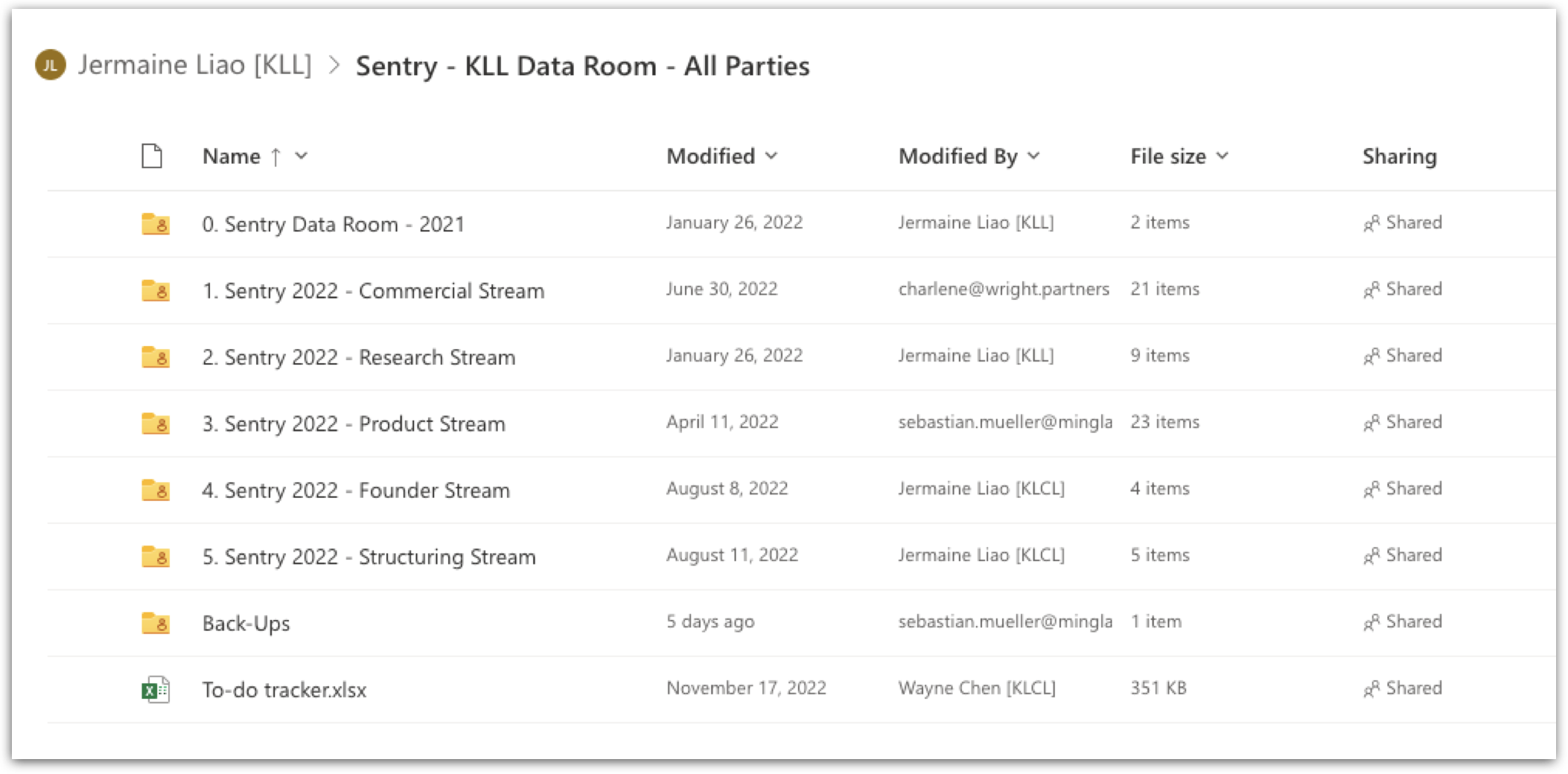¶ Knowledge Transfer & Data Room
¶ What it is
When starting a new project, there is likely already some knowledge in some parts of the organisation which can be leveraged. To ensure this is considered and properly structured, the team seeks out knowledge holders and experts initially. Next, it gets a structured transfer of that knowledge and the relevant documents and data. This is then structured into a “data room” that holds all information so that it can easily be found and utilised.
¶ Why it is useful
Data rooms provide a shared repository of knowledge, which creates full transparency for the team and shared access to all relevant knowledge. This makes it easier to get on the same page and knowledge level in the beginning, onboard new team members later, and leverage existing organisational information.
¶ When to use it
Data rooms are mandatory when there is already existing knowledge in the organisation and with the key stakeholders, which needs to be ingested by the team in the beginning in a structured way. They are further instrumental in an ongoing knowledge structure maintained during the project to quickly onboard new team members and correctly archive the project at the end.

¶ How is it done
- Set up a file structure that reflects the logic of your project, in which every work stream/focus topic has its area where documents can be placed.
- Collect all relevant data and documents from the knowledge owners and structure them into the file system, regularly reviewing the logic you applied to the labels and changing it if needed.
- Ensure that all project participants have the necessary access to the data room and that they have the time allocated to review all data relevant to their work stream, which has been provided.
- Probe the data room for completeness, and seek additional documents as needed.
¶ Do's & Don't
Do's
- Beware of version conflicts - constantly review the documents carefully to ensure only the latest and most useful version is quickly accessible.
- Do archive older versions of documents if you want to be able to refer back to them. Ensure they are clearly labelled as archived, and it is obvious where the most current version is stored.
- Assign responsibilities for various areas to different team members, ensuring clear ownership for completing the relevant knowledge area.
- Utilise the data room on an ongoing basis throughout the project, building a shared repository of knowledge to refer to.
¶ Tools needed
- A shared file storage (e.g. Sharepoint or Google Drive)